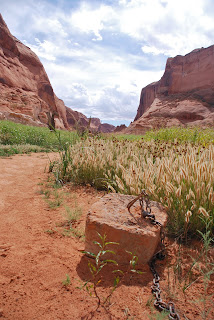 If you’ve wandered so far that your only neighbors are desert sand and the ever-present sun overhead, most cautionary tales would urge you to turn back the way you came. There’s an exception to this rule—perhaps several exceptions—but the journey I’m thinking of leads you to the desert oasis called Lake Powell.
If you’ve wandered so far that your only neighbors are desert sand and the ever-present sun overhead, most cautionary tales would urge you to turn back the way you came. There’s an exception to this rule—perhaps several exceptions—but the journey I’m thinking of leads you to the desert oasis called Lake Powell.
Making the trip to Lake Powell is barren. Yet, if you push on past the heat that makes the distant road look like liquid, you’ll find a body of water kept together by the rough, red sandstone of southeastern Utah and northeastern Arizona. John Wesley Powell first discovered the area 144 years ago, and the once meek Colorado River was soon after a mighty Lake Powell.
A bathtub fit for the Gods, this getaway is to be enjoyed with warm weather and a carefree approach. Though Lake Powell is widely known as the best body of water for your boating pleasure, there are some well-kept historic secrets to be uncovered as well. Just a few miles south of the Utah border in Page, Az., the Glen Canyon Dam stands out as the only wall not made of sandstone. The manmade, concrete wall is responsible for the summer sanctuary where people near and far go to enter a world where the sun tells the time and your most prized commodities are blocks of ice.
If someone asked me to describe Lake Powell I’d say that it trumps your tired vacation spot because it’s vast, quiet and unpopulated by waves of tourists. But if someone asked me why I go to Lake Powell I’d tell them it’s because my favorite songs sound better echoing through sandstone walls, because my thoughts have newfound clarity in these canyons, and because I’ve never taken a photograph that gives Lake Powell justice like my own memories do.





No comments:
Post a Comment